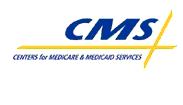Department of Human Services
Making Medicare Make Sense May 2011
Answers To Some of The Most Commonly Asked Medicare Questions
This article is 13 years old. It was published on May 1, 2011.
Q: What provisions of the Affordable Care Act does the new Center for Consumer Information and Insurance Oversight (CCIIO) administer within the Centers for Medicare & Medicaid Services (CMS)?
A: Recently, the Office of Consumer Information and Insurance Oversight, (OCIIO), which originally reported directly to the Department of Health and Human Services, was moved within our agency, the Centers for Medicare & Medicaid Services, CMS.
This new center within CMS, the Center for Consumer Information and Insurance Oversight (CCIIO) is charged with helping implement many provisions of the Affordable Care Act, the historic health reform bill that was signed into law March 23, 2010. CCIIO oversees the implementation of the provisions related to private health insurance, while the rest of our agency oversees public health insurance programs, such as Medicare, Medicaid and the Children’s Health Insurance Program.
CCIIO’s current areas of emphasis are:
· Ensuring compliance with new insurance market rules, such as the Patient’s Bill of Rights
· Helping states review unreasonable rate increases and overseeing new Medical Loss Ratio rules.
· Providing oversight for the State-Based Health Insurance Exchanges and compiling data for www.HealthCare.gov
· Administering the Consumer Assistance Program, Pre-Existing Condition Insurance Plan and Early Retiree Reinsurance Program.
Q: What is the Pre-Existing Condition Insurance Plan (PCIP) that is currently available either through your home state or the federal government due to the Affordable Care Act for anyone who does not have health insurance because they have been turned down due to a pre-existing condition?
A: People with pre-existing conditions face daunting challenges, and high costs, when they go shopping for health insurance. In most states, private health insurance companies can refuse to insure someone if they have a pre-existing condition.
PCIP is a new program created by the Affordable Care Act to help provide coverage for uninsured people with pre-existing conditions until new insurance market rules go into effect in 2014.
The Affordable Care Act helps uninsured people with pre-existing conditions get high quality care, at affordable prices, and get some control back over their own health care.
It does so in two ways. Starting in 2014, discrimination based on a pre-existing condition by an insurer will be prohibited in every state, and consumers will have access to affordable private health insurance choices through a new organization called an Exchange, a competitive marketplace for health plans.
Until then the Affordable Care Act establishes the PCIP as a transitional program to make health coverage available to consumers if they have faced barriers to private health insurance because of a pre-existing condition and have gone without coverage for at least six months.
The Affordable Care Act provides federal funding to support a PCIP in every state. The program may vary depending on which state you live in. Some states have requested that the federal government run their PCIP, which would be CMS in its operations with the Department of Health and Human Services. CMS is contracting with a national insurance plan to administer benefits in those states. A little more than half of the states have requested that they run the program themselves.
To qualify for coverage:
· You must be a citizen or national of the United States or residing in the United States legally.
· You must have been uninsured for at least the last six months before you apply.
· You must have a pre-existing condition or have been denied coverage because of your health condition.
The Pre-Existing Condition Insurance Plan:
· Covers a broad range of health benefits, including primary and specialty care, hospital care, and prescription drugs.
· Makes certain that all covered benefits are available for you, even if it’s to treat a pre-existing condition.
· Doesn’t charge you a higher premium just because of your medical condition.
· Doesn’t base eligibility on income.
To find out about the PCIP details for your state, please check out this website https://www.pcip.gov and choose the topic at the top of the page, “Find Your State.”
You can also find out more about the Pre-Existing Condition Insurance Plan by calling: 1-866-717-5826: (TTY: 1-866-561-1604)
Pre-Existing Condition Insurance Plan regular hours of operation are Monday - Friday, 8 a.m. to 11 p.m., Eastern Time.
Be careful though, you can only enroll in the PCIP by applying for coverage using the methods described on the website, or over the phone by calling, 1-866-717-5826. Do not respond to phony calls or letters asking you to enroll for a fee.
Once you apply and become eligible, we will mail you a letter that includes the amount of your monthly premium and instructions for making your first premium payment to complete your enrollment. You must pay your monthly premium to maintain that coverage.
-
Department:
Department of Human Services
-
Topic:
Federal and State Government Services

